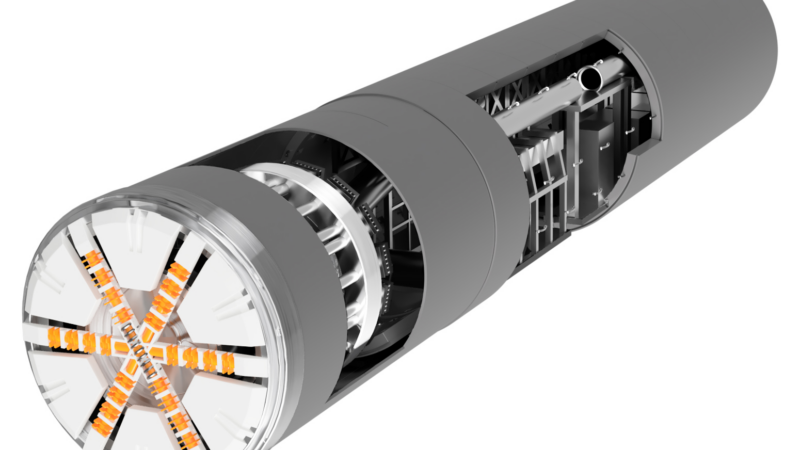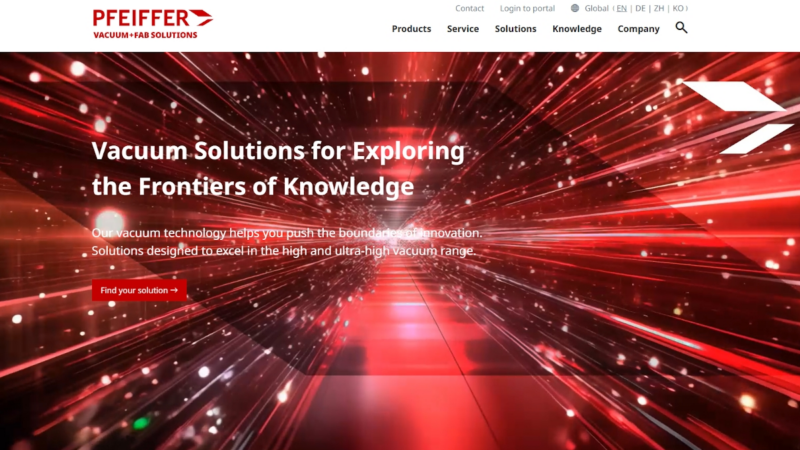With the VisionXP+ Vac convection soldering system, Rehm Thermal Systems offers a system which places special emphasis on productivity, resource efficiency and CO2 footprints
Vacuum is a well-known and commonly used method which is integrated into soldering processes to reduce voids. It can be used with contact soldering, condensation soldering and inline reflow soldering via convection. At Rehm Thermal Systems, multiple systems offer the option of vacuum soldering: the vapour phase soldering systems in the Condenso series, the Nexus contact heat soldering system and the VisionXP+ Vac convection soldering system. With vacuum inline reflow soldering with the VisionXP+ Vac by Rehm Thermal Systems, productivity, resource efficiency and CO2 footprints in particular play an important role.
The VisionXP+ convection soldering system by Rehm Thermal Systems is clearly in line with the trend towards environmentally responsible management of resources. Special emphasis is also placed on energy efficiency and the reduction of emissions and running costs. The option of carrying out vacuum soldering also enables you to create a time-efficient and stable production procedure, as well as to reduce voids, in order to ensure low-maintenance manufacturing.
Productivity
The cycle time of the VisionXP+ Vac convection soldering system by Rehm Thermal Systems is defined by the time which is required to complete the vacuum step. This includes the transportation of the product into the vacuum chamber, the closing of the vacuum chamber, the time until the target pressure has been achieved, the dwell time at the target pressure, the ventilation of the chamber and the opening of the chamber. However, productivity can be further increased using a two-track system with central support, scalable vacuum chamber sizes for optimum adaptation to the respective product and an optimised temperature/pressure/time profile. This is possible with the VisionXP+ Vac. With regard to profiling, the ViCON software by Rehm Thermal Systems enables the combined temperature/pressure/time profile to be created in a convenient manner. In this regard, we should not lose sight of the fact that pressure gradients which are too high during the creation of the vacuum may increase productivity but may also lead to process errors such as solder beads or components which slip out of place. Therefore, profiling enables the combination of maximum productivity and maximum process reliability to be found. In summary, the VisionXP+ Vac enables large-scale production on an inline reflow soldering system and features an optional vacuum for void-free processes.
Resource efficiency and CO2 footprint
In addition to the total cost of ownership, CO2 footprints are becoming increasingly important. Consumption of electricity, nitrogen and coolant, as well as heat loss, should therefore not just be reduced for economic reasons but also to promote environmentally-friendly and climate-friendly production. With respect to the local energy mix in Germany, 1 kWh corresponds to an equivalent of 0.49 kg CO2 emissions and 1 m3 nitrogen corresponds to approx. 0.5 kg CO2 emissions. An energy saving of 30% by replacing AC motors with EC motors therefore corresponds to a reduction of the CO2 footprint by approx. 5%. Precise regulation is required to reduce nitrogen consumption. On top of this, the innovative option of Rehm CoolFlow facilitates the optimisation of cooling and nitrogen consumption. Liquid nitrogen is used in the cooling zone for more efficient cooling and the gaseous nitrogen that is created is used for inerting the process chamber. This means that less energy is required to provide the coolant, while the nitrogen is used twice, leading to a reduction of CO2 emissions by 15% in total.
Another aspect of resource efficiency is the maintenance intervals and service times. In order to keep the maintenance intervals as long as possible, functions such as vibration measurement on the transport system are used to identify contamination and wear on the chain. The pyrolysis unit typically reduces the contamination in the machine, while the heat loss from pyrolysis is returned to the heating zones. For the VisionXP+ Vac by Rehm Thermal Systems, the current energy and nitrogen consumption is very easy to monitor with the ViCON software. Furthermore, all data on resource efficiency can be recorded and logged, as well as transmitted directly to the management execution system (MES).
In conclusion, the resource-friendly consumption of energy is a primary goal of the most recent developments in order to reduce running costs and CO2 footprints. Innovative features combine the reduction of energy and nitrogen consumption to achieve the best process results with as low a CO2 footprint as possible for inline reflow soldering systems both with and without a vacuum.
As a specialist in the field of thermal system solutions for the electronics and photovoltaics industries, Rehm is a technology and innovation leader in the modern and economical production of electronic modules. As a globally operating manufacturer of reflow soldering systems with convection, condensation or vacuum, drying and coating systems, functional test systems, equipment for the metallisation of solar cells as well as numerous customer-specific special systems, we are represented in all relevant growth markets and, as a partner with more than 30 years of industry experience, we implement innovative manufacturing solutions that set standards.
Contact
Rehm Thermal Systems GmbH
Anna-Lena Hoffmann
Leinenstraße 7
89143 Blaubeuren
Phone: 07344 9606 746
Fax: 07344 9606 525
E-Mail: an.hoffmann@rehm-group.com
Url: http://www.rehm-group.com
Die Bildrechte liegen bei dem Verfasser der Mitteilung.







